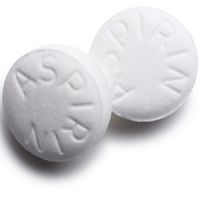According to research presented at the ESC Congress 2018, people who have lots of deep forehead wrinkles, more than is typical for their age, may have a higher risk of dying of cardiovascular disease (CVD). Therefore, assessing brow wrinkles could be an easy, effective and low-cost technique for identifying people who might be at a high risk of CVD.
Study author Yolande Esquirol, associate professor of occupational health at the Centre Hospitalier Universitaire de Toulouse in France points out that risk factors such as hypertension and high cholesterol cannot be seen or felt but forehead wrinkles can be used as a marker because they can be seen visually. By simply looking at a person's face, it would be easy to determine if they were at risk. If they are, they can be given advice regarding precautions that they could take to prevent the onset of cardiovascular disease.
This advice could include lifestyle changes, increased physical activity and a healthier diet. "Of course, if you have a person with a potential cardiovascular risk, you have to check classical risk factors like blood pressure as well as lipid and blood glucose levels, but you could already share some recommendations on lifestyle factors," Dr Esquirol points out.
While there is no doubt that the risk of heart disease increases with age, but lifestyle and medical interventions can help mitigate the danger. However, it is important to identify patients who might be at a high-risk of developing this disease to alert them.
Previous research has analysed other visible signs of ageing to see if they can presage cardiovascular disease. While results did not show any relationship between crow's feet and cardiovascular risk, other visible signs such as male-pattern baldness, earlobe creases, and xanthelasma might be associated with a higher risk of heart disease, but not with an increased risk of actually dying.
During this current study, the authors investigated horizontal forehead wrinkles to see if they were associated with cardiovascular risk. The study was conducted with 3000 healthy adults who were aged 32, 42, 52, and 62 at the beginning of the study. Physicians assigned scores depending on the depth and the number of wrinkles on their foreheads (where a score of zero meant no wrinkles while a score of 3 meant numerous deep wrinkles). Study participants were followed for 20 years. During this time, 233 participants died of various causes, 15.2% had a score of two or three wrinkles, 6.8% had a score of one wrinkles and 2.1% had no wrinkles.
Results showed that people with a wrinkle score of one had a slightly higher risk of dying of cardiovascular disease compared to those who had no wrinkles. Participants with a wrinkle score of two or three had 10 times the risk of dying compared to those who had a wrinkle score of zero. "The higher your wrinkle score, the more your cardiovascular mortality risk increases," explained Dr Esquirol.
Study researchers are still not sure about the reason for this relationship but they believe that it could have something to do with atherosclerosis, a major contributor to heart attacks and other cardiovascular events. It is also possible that blood vessels in the forehead, which are quite small, may be more sensitive to plaque build-up thus forehead wrinkles could be a sign of vessel ageing.
"This is the first time a link has been established between cardiovascular risk and forehead wrinkles so the findings do need to be confirmed in future studies," cautions Dr Esquirol, "but the practice could be used now in physicians' offices and clinics. It doesn't cost anything and there is no risk," concluded Dr Esquirol.
Source: European Society of Cardiology
Image Credit: Pixabay
Latest Articles
cardiovascular disease, #ESC2018, forehead wrinkles
According to research presented at the ESC Congress 2018, people who have deep forehead wrinkles, more than is typical for their age, may have a higher risk of dying of cardiovascular disease.



























